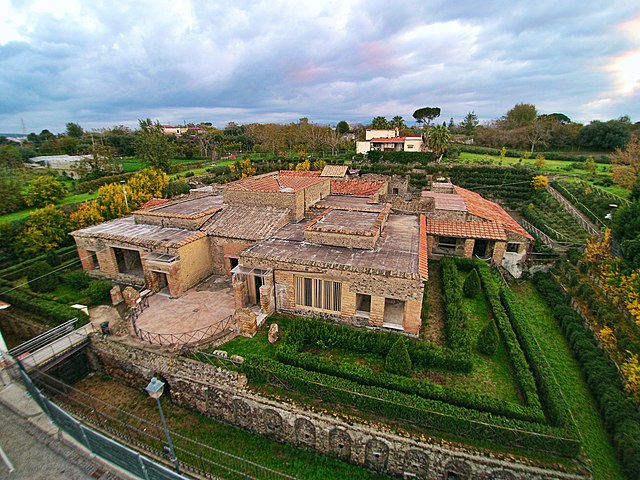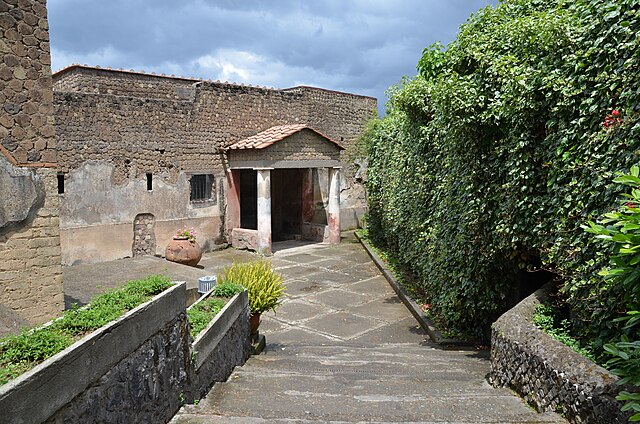Lullingstone Roman Villa is a villa built during the Roman occupation of Britain, situated in Lullingstone near the village of Eynsford in Kent, south-eastern England. The villa is located in the Darent Valley, along with six others, including those at Crofton, Crayford and Dartford. Constructed in the 1st century, perhaps around 80–90 AD, the house was repeatedly expanded and occupied until it was destroyed by fire in the 4th or 5th century. The villa was occupied over various periods within the Romano-British period, but after its destruction, it is only thought to have been reoccupied during the medieval period. The occupants were most likely wealthy Romans or native Britons who had adopted Roman customs.
The enclosed interior of Lullingstone Villa
Model of the Roman Villa
Exterior building of the Lullingstone Roman Villa built in the 20th century.
Marble bust found in the shrine room, the original of which is in the British Museum. It depicts a man who is about 50 years old, possibly a family member, or possibly the Emperor Pertinax when he was governor of the province of Britannia.
A Roman villa was typically a farmhouse or country house in the territory of the Roman Republic and the Roman Empire, sometimes reaching extravagant proportions.
Villa Poppaea at Oplontis (c. 50 BC)
Villa Regina, Boscoreale
Villa of the Mysteries, Pompeii
Entrance to the Villa San Marco, Stabiae








